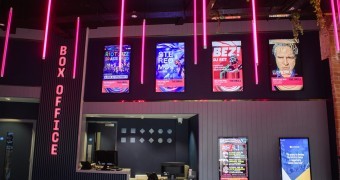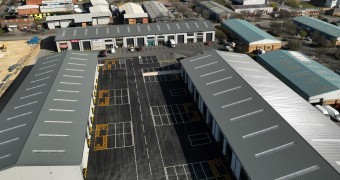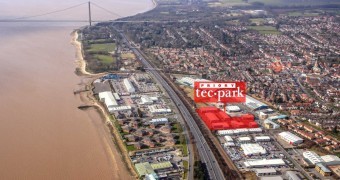What happens when an insurance loss occurs?
An insurance loss is something no company director wants to face; in fact, many businesses fail to recover from insurance losses which can lead to insolvency if the business cash flow cannot sustain the unexpected shortfall.
When the loss adjuster arrives at your premises on behalf of the insurance company, you will need to provide them with evidence that supports the sums you are insured for. If you are unable to do so, the loss adjuster will then appoint professional valuers to undertake a thorough valuation of your property and plant, machinery etc.
Commercial property solutions
Our team of building consultants provide a range of commercial property solutions, from specialist building surveys to architecture and education funding application support. Speak to one of our experts to find out how we can help you deliver your objectives.
What is required for the loss adjustment?
When the loss adjuster arrives at your premises on behalf of the insurance company, you will need to provide them with evidence that supports the sums you are insured for. If you are unable to do so, the loss adjuster will then appoint professional valuers to undertake a thorough valuation of your property and plant, machinery etc.
It is at this point where discrepancies between the insured value and true cost of replacement often begin to arise and loss adjusters are faced with habitual retorts such as, “Well, we wouldn’t have replaced that building so that isn’t included in our figures,” or “We haven’t used that piece of machinery in years so we didn’t include that one.”
Unfortunately, the loss adjuster will find this unacceptable. If the policy is full reinstatement with new, all tangible business assets should be covered at replacement cost. Once all numbers have been crunched and the loss adjuster has indicated underinsurance, the policy holder will be facing what is known as the ‘average’.
What is the average clause?
In the event of a claim being made by a company that is underinsured, the insurance company will invoke this clause. This means that if the company was underinsured for the entire policy by 50%, the value of any claim will be reduced by this amount.
- Sums insured are £4,000,000
- True value of sums insured after investigation by loss adjuster should be £8,000,000
- Claim is for £2,000,000 (i.e. well below current sums insured but subject to average clause)
 Therefore, the policy holder is facing a shortfall of £1,000,000
Therefore, the policy holder is facing a shortfall of £1,000,000
(Professional valuations can often facilitate the removal of the average clause)
This emphasises why it is absolutely essential to have a professional insurance valuation of your buildings and contents by a reputable firm of valuers regulated by the Royal Institution of Chartered Surveyors (RICS).
What are common reasons for underinsurance?
The most common reason for underinsurance is that historical figures are used that haven’t been checked and updated for many years and are now out of sync with current costs. With buildings in particular, market valuation figures are used from when properties were initially bought or from valuations undertaken for other purposes which quickly become outdated. Equally when significant renovations have occurred, such as extensions built or buildings altered, this must be taken into account for insurance purposes but are often overlooked.
Underinsurance of plant and machinery
In terms of contents such as plant and machinery, underinsurance is particularly common. Most plant and machinery insurance policies are based on “new for old”, meaning that the sum insured must take into account the cost to replace all of the plant and machinery with brand new equipment, even if the damaged/destroyed/stolen equipment was initially bought second-hand.
The problem many businesses face is that the sums insured on their plant and machinery are often based on their original purchase cost. That may have been a number of years ago and the costs for a new piece of the same equipment could be a lot higher. In other cases, there is the common situation of insurance figures based on the written down value of the machine after depreciation has been deducted from the original cost – perhaps over many years. This can lead to circumstances where some pieces of equipment are valued at nil in terms of the written down value and, if that figure is then used as the basis for the sum insured, it is easy to see how major problems may arise.
How to plan reinstatement of plant and machinery
This all points to the need for a plan going forward; the basis of which is a comprehensive schedule of the main items of equipment, plus suitable allowances for sundry items, with full reinstatement figures for each item. Once this is established the company can make informed decisions about how they would reinstate the equipment.
It may be that in the event of loss, a business owner would be happy to reinstate elements of equipment with second hand machinery, by applying an indemnity value. Where there is plentiful supply this can be cost-efficient against the price of new.
What is an indeminity cost assessment?
An Indemnity Cost Assessment (ICA) is the sum insured for items of plant and machinery represents the equivalent cost of replacing the items with identical, or substantially similar, equipment in a condition comparable to that of the existing asset. In other words, the insured value as at its present worth, including full costs of installation and commissioning, established by comparable market values or the depreciated reinstatement value.
How is market value defined?
Market value is where assets are surplus, or no longer used, they may be insured at their recoverable amount. Many companies have assets on site with no intention of ever using them again but which they wish to keep “just in case”, though would not necessarily replace in the event of loss. These could be insured on a market value basis.
Understanding modern equivalent
Alternatively some equipment may be suitable for modern equivalent. Modern Equivalent is a basis of insurance commonly used to reduce insurance premiums. Where a series of older machines have a lower output than their modern equivalents, this can be selected to help reduce premiums. In the event of a claim, the older machines are replaced with a fewer number of modern machines, reducing the cost of replacement whilst ensuring that the same output can be achieved.
Above all else, it is critically essential to have your assets documented in the form of a cost assessment for insurance purposes attached to the policy, produced by a firm of RICS regulated professional valuers, so that in the event of loss there is no confusion that this was the intention of the company going forward. This is where Eddisons can help. With a team of both property and plant and machinery valuers located across the country, we can meet all your insurance valuation needs.
Experts in commercial property
Contact our team of leading auctioneers, property agents, and RICS-qualified surveyors today.












